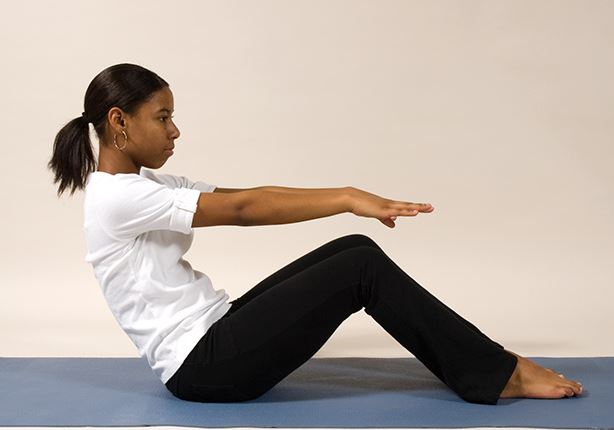Outline of the Article
- Introduction to Daily Exercise Routine at Home
- Benefits of Daily Exercise
- Physical Health Benefits
- Mental Health Benefits
- Setting Realistic Goals
- Types of Exercises for a Daily Routine
- Cardiovascular Exercises
- Strength Training Exercises
- Flexibility and Balance Exercises
- Creating a Structured Routine
- Time Management
- Balancing Different Types of Exercises
- Importance of Warm-Up and Cool-Down
- Utilizing Home Equipment or No Equipment Exercises
- Motivation and Accountability
- Incorporating Variety to Prevent Boredom
- Tracking Progress
- Overcoming Challenges and Plateaus
- Safety Precautions and Injury Prevention
- Incorporating Rest Days
- Staying Hydrated and Eating Well
- Conclusion
Daily Exercise Routine at Home
In today’s fast-paced world, finding time to hit the gym or attend fitness classes can be challenging. However, maintaining a healthy lifestyle is crucial for overall well-being. Fortunately, establishing a daily exercise routine at home can be an effective solution. Let’s explore how you can design and implement a successful daily exercise regimen within the comfort of your own home.

Benefits of Daily Exercise
Physical Health Benefits
Regular exercise offers numerous benefits for physical health. It helps in maintaining a healthy weight, strengthens muscles and bones, improves cardiovascular health, and enhances immune function.
Mental Health Benefits
In addition to its physical benefits, exercise is also vital for mental well-being. It reduces stress, anxiety, and depression by releasing endorphins, the body’s natural mood elevators. Daily exercise promotes better sleep quality and boosts self-esteem and confidence.
Setting Realistic Goals
Before diving into a daily exercise routine, it’s essential to establish realistic goals. Whether your aim is to lose weight, build muscle, or improve flexibility, setting achievable targets will keep you motivated and focused.
Types of Exercises for a Daily Routine
Cardiovascular Exercises
Incorporate activities like brisk walking, jogging, cycling, or dancing to elevate your heart rate and improve endurance. Aim for at least 30 minutes of moderate-intensity cardio exercises most days of the week.
Strength Training Exercises
Include bodyweight exercises such as push-ups, squats, lunges, and planks to build strength and muscle tone. You can also use resistance bands or dumbbells for added resistance.
Flexibility and Balance Exercises
Integrate stretching routines and yoga poses to enhance flexibility, balance, and range of motion. These exercises also promote relaxation and reduce the risk of injury.
Creating a Structured Routine
To ensure consistency, it’s essential to establish a structured exercise routine. Allocate specific times during the day for workouts and prioritize them as you would any other important task.
Time Management
Consider your daily schedule and allocate time slots for different types of exercises. Breaking your routine into manageable chunks can make it easier to stay committed.
Balancing Different Types of Exercises
Strive for a balanced workout routine that includes cardiovascular, strength training, flexibility, and balance exercises. Mixing up your workouts not only prevents boredom but also targets different muscle groups for overall fitness.
Importance of Warm-Up and Cool-Down
Before starting your exercise session, always begin with a proper warm-up to prepare your body for activity and reduce the risk of injury. Similarly, conclude each workout with a cool-down period to gradually lower your heart rate and stretch your muscles.
Utilizing Home Equipment or No Equipment Exercises
You don’t need fancy gym equipment to get an effective workout at home. Many exercises can be performed using your body weight or simple household items like chairs, stairs, or water bottles. Alternatively, invest in basic fitness equipment such as resistance bands, dumbbells, or a yoga mat for added variety.
Motivation and Accountability
Staying motivated can be challenging, especially when exercising alone at home. Find ways to stay accountable, whether it’s by setting workout reminders, joining online fitness communities, or exercising with a friend virtually.
Incorporating Variety to Prevent Boredom
To keep your workouts engaging and exciting, experiment with different exercises, routines, and workout formats. Consider trying new activities or incorporating outdoor workouts when possible to add variety to your routine.
Tracking Progress
Keep track of your workouts, progress, and achievements to stay motivated and monitor your improvement over time. Whether it’s through a fitness journal, mobile app, or wearable fitness tracker, tracking your progress can help you stay on course towards your goals.
Overcoming Challenges and Plateaus
Expect challenges and setbacks along your fitness journey, but don’t let them discourage you. When faced with obstacles or plateaus, reassess your goals, adjust your routine if necessary, and seek support from friends, family, or fitness professionals.
Safety Precautions and Injury Prevention
Prioritize safety during your workouts by using proper form and technique, especially when performing strength training exercises. Start gradually, listen to your body, and avoid overexertion to prevent injuries.
Incorporating Rest Days
Rest days are essential for muscle recovery and overall well-being. Incorporate rest days into your weekly routine to allow your body time to recuperate and prevent burnout.
Staying Hydrated and Eating Well
Maintain proper hydration by drinking plenty of water throughout the day, especially before, during, and after exercise. Fuel your body with nutritious foods rich in protein, carbohydrates, healthy fats, vitamins, and minerals to support your fitness goals and overall health.
Conclusion
Establishing a daily exercise routine at home is an excellent way to prioritize your health and fitness despite a busy schedule. By incorporating a variety of exercises, setting realistic goals, staying motivated, and prioritizing safety, you can achieve your fitness objectives and enjoy the numerous physical and mental health benefits of regular exercise.
Unique FAQs After The Conclusion:
- Q: Can I achieve my fitness goals with a daily exercise routine at home? A: Yes, with dedication and consistency, you can achieve significant fitness goals through a daily exercise routine at home.
- Q: Do I need expensive equipment for home workouts? A: No, many effective workouts can be done using just your body weight or minimal equipment. However, investing in basic equipment can add variety to your routine.
- Q: How can I stay motivated to exercise at home? A: Set realistic goals, vary your workouts, track your progress, and find ways to stay accountable, such as exercising with a friend or joining online fitness communities.
- Q: Is it necessary to warm up before exercising at home? A: Yes, warming up before exercise helps prepare your body for activity, reduces the risk of injury, and improves performance during your workout.
- Q: How often should I change my exercise routine? A: It’s beneficial to periodically change your exercise routine to prevent boredom, plateauing, and overuse injuries. Aim to switch things up every 4-6 weeks.
